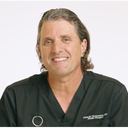I had a "mini" facelift jan 2 (had full face lift 11 yrs ago) and there was a pretty good scab then, but this time it seems to have lingered more and even grown. I was given some advice to use hydrogen peroxide to soften and remove it, but not sure I trust that. Is there ever a case for that, or should i just leave it to nature? Thanks!
Answers (6)
From board-certified doctors and trusted medical professionals
Dr. Suzanne Kim Doud Galli, MD, PhD, FACS
Board Certified Facial Plastic Surgeon
Answer
Dr. Sheldon S. Kabaker, MD FACS (retired)
Board Certified Facial Plastic Surgeon
Answer

